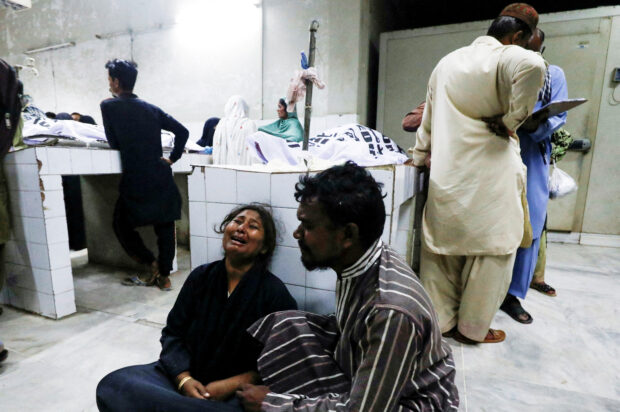
People mourn the death of a relative, who was killed along with others in a stampede during handout distribution, at a hospital morgue in Karachi, Pakistan March 31, 2023. REUTERS/Akhtar Soomro
ISLAMABAD — Consumer price inflation in Pakistan jumped to a record 35.37% in March from a year earlier, the statistics bureau said on Saturday, as at least 16 people were killed in stampedes for food aid.
The March inflation number eclipsed February’s 31.5%, the bureau said, as food, beverage and transport prices surged up to 50% year-on-year.
Thousands of people have gathered at flour distribution centres set up across the country, some as part of a government-backed program to ease the impact of inflation.
At least 16 people, including five women and three children, have been killed in stampedes at such centres in recent days, police and officials have said. Thousands of bags of flour have also been looted from trucks and distribution points, according to official records.
A spokesman at the statistics bureau said the inflation number was the highest ever year-on-year increase recorded by the bureau since monthly records began in the 1970s.
“This is the highest ever inflation recorded in the data we have,” he said.
The consumer price index was up 3.72% in March from the previous month, the bureau said.
Higher prices of food, cooking oil and electricity pushed up the index, it said.
Annual food inflation in March was at 47.1% and 50.2% for urban and rural areas respectively, the bureau said. Core inflation, which strips out food and energy, stood at 18.6% in urban areas and 23.1% in rural areas.
The South Asian nation has been in economic turmoil for months with an acute balance of payments crisis while talks with the IMF to secure $1.1 billion funding as part of $6.5 billion bailout agreed in 2019 have not yet yielded fruit.
Pakistan’s foreign exchange reserves have fallen to cover barely four weeks of imports.
A monthly economic outlook report issued by the finance ministry on Friday projected inflation would remain elevated.
The report cited market frictions caused by relative demand and supply gaps of essential items, exchange rate depreciation, and the recent upward adjustment in fuel prices as reasons behind higher inflation expectations.